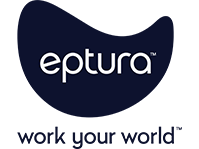In episode 374, host Mike Petrusky speaks with Martha Lawrence, Executive Editor at Blanchard and author of the book, “Catch People Doing Things Right: How Ken Blanchard Changed the Way the World Leads” in which she paints an intimate portrait of the man behind “The One Minute Manager” and dozens of other influential books. Mike asks Martha about Ken Blanchard’s leadership philosophy which emphasizes working with people rather than controlling them, and they discuss how catching people doing things right can significantly boost energy levels and morale. Martha says that leadership is not just about formal positions, but she believes anyone can be a leader by influencing others, so our focus should be on empowering people and fostering a positive environment. Innovation often requires collaboration and overcoming the natural tendency to focus on mistakes, but effective change management involves addressing people’s concerns about information, personal impact, and implementation.
Agenda
- A discussion about Ken Blanchard’s impact on leadership
- Exploration of the leadership principles and practices
- Advice for facility management and workplace leaders on how to apply this leadership philosophy in their roles
What you need to know: Workplace takeaways
Takeaway 1: Positive reinforcement can significantly boost workplace energy and innovation
Even without a formal leadership position, anyone can make a difference by practicing positive reinforcement, a technique that can elevate the energy and morale of a team.
“Catch someone doing something right. Tell them what they did. Tell them how it made you feel and let them know that they made a difference in your life. And just watch the energy level, watch it go up,” says Martha.
She emphasizes the importance of recognizing and praising progress, not just perfection. “You don’t wait until they do it perfectly right because as you know, Mike, any innovation you’re going to have flub-ups. So, you want to praise progress because it’s a moving target,” she explains. This approach can help foster a culture where mistakes are seen as learning opportunities rather than failures.
Moreover, the benefits of positive reinforcement extend beyond just boosting energy levels. Studies have shown that it increases dopamine and serotonin levels in the brain, making people feel better and more engaged. “It actually increases the dopamine and serotonin levels in the brain and allows people to feel better and to learn more easily. It helps them to engage that frontal cortex where great ideas come from,” she notes.
Takeaway 2: Leadership is an influence process, not a top-down directive
The webinar highlights the shift in leadership philosophy from a top-down, autocratic style to a more collaborative and empowering approach. “Prior to Ken popularizing a lot of these concepts, leadership was a top-down sort of thing. Until the industrial revolution, leadership was something that had been brought down from the military, which was a very directive leadership style, necessarily so,” Martha explains.
Ken Blanchard’s influence was pivotal in changing this paradigm. “Along comes Ken saying, Hey, leadership is something you do with people, not to people. You know, leadership is an influence process. It’s about empowering people, not controlling people,” Martha shares. This philosophy is particularly relevant in today’s fast-changing business environment, where adaptability and collaboration are crucial.
Mike agrees with this perspective, noting, “It’s essential to communicate and to cast a vision as a leader and frame things in a way that matters to the people that we hope to bring along on the journey.” This approach ensures that everyone in the organization feels valued and motivated to contribute to the common goal.
Takeaway 3: Collaboration is key to innovation and success.
The importance of collaboration in achieving success and fostering innovation was a recurring theme in the webinar. “None of us is as smart as all of us,” Martha quotes from Ken’s book, “High Five.” This quote underscores the idea that collective intelligence and teamwork are more powerful than individual efforts.
She shares her own experience with this principle, saying, “I learned so much when I hung out with Ken and started watching the way he worked with people and tapped into people’s genius, and didn’t take credit. He didn’t care who got the credit. He just cared about the goal.” This mindset encourages a more inclusive and supportive work environment.
When discussing the Workplace Innovator podcast, Martha notes that innovation is a collaborative effort. “The Workplace Innovator podcast makes me think about how people can work together to innovate. I don’t think anyone innovates all by their lonesome,” she says. This aligns with the podcast’s mission to inspire and empower workplace leaders to create better environments through collaboration and mutual support.
Workplace management insights
Leadership is not just about formal positions; anyone can be a leader by influencing others positively.
The importance of recognizing and praising people for their efforts and successes, rather than only focusing on mistakes and failures.
The role of collaboration in innovation and the importance of acknowledging the collective intelligence of a team.
The impact of positive reinforcement on brain chemistry, leading to increased engagement and creativity.
The need for leaders to address the concerns of their team members during times of change, focusing on information, personal, and implementation concerns.
The idea that leadership has evolved from a top-down, autocratic style to a more inclusive and people-oriented approach.
Do a deep dive into more workplace insights by exploring all Workplace Innovator podcast episodes









